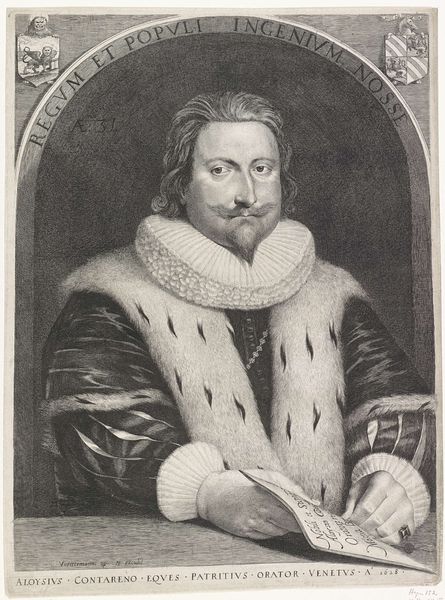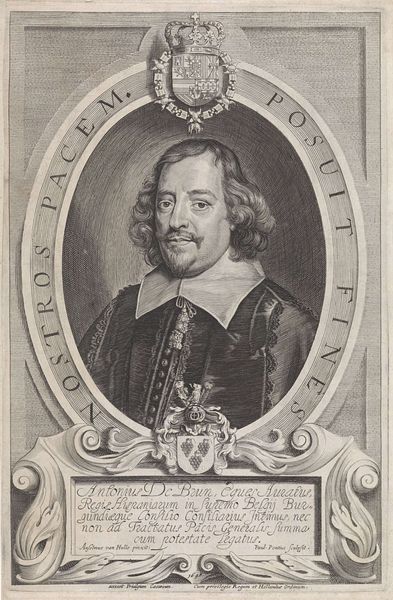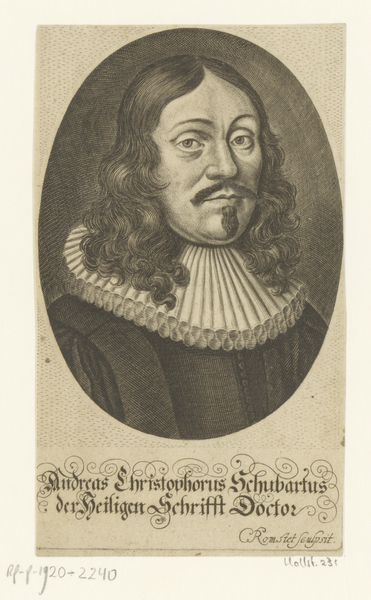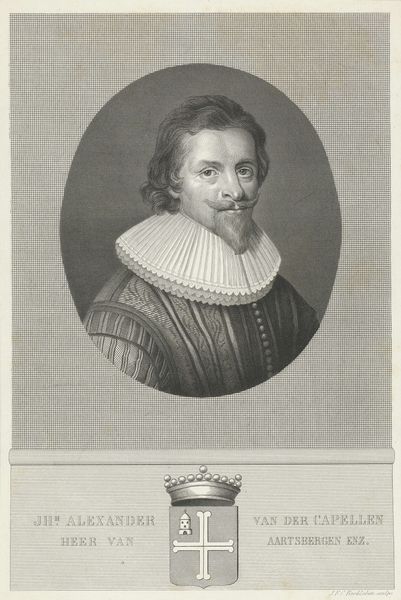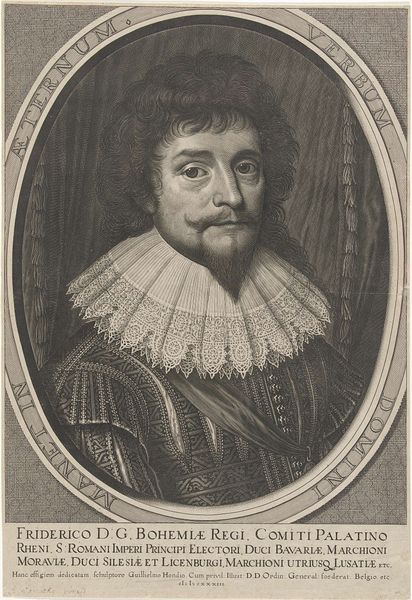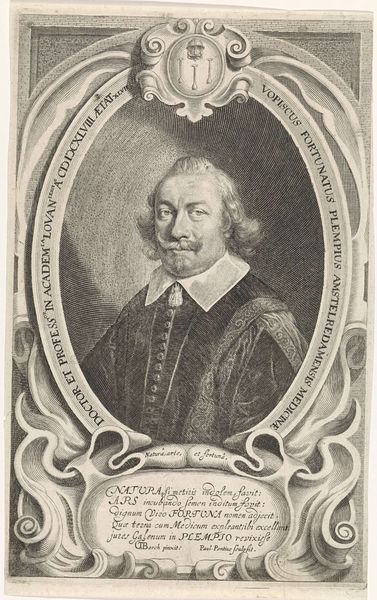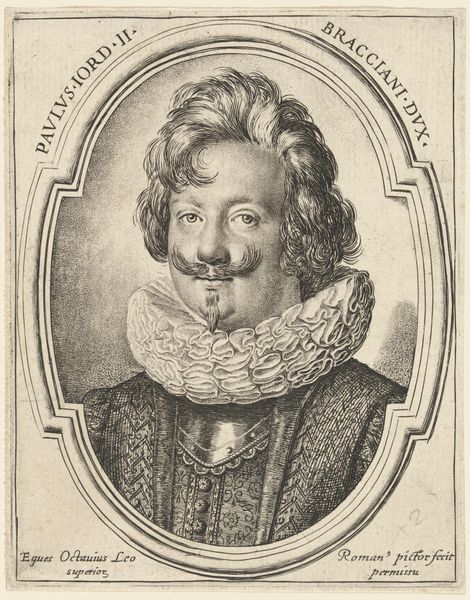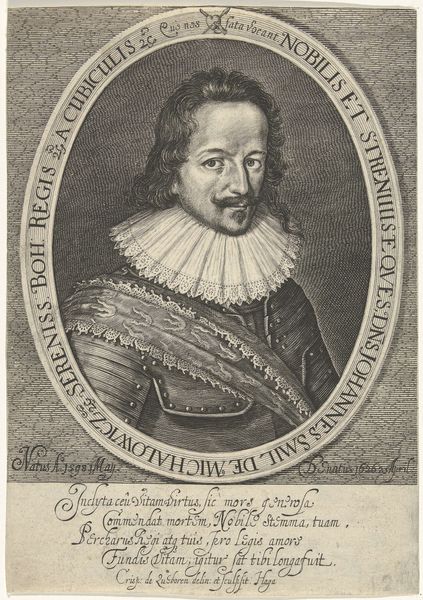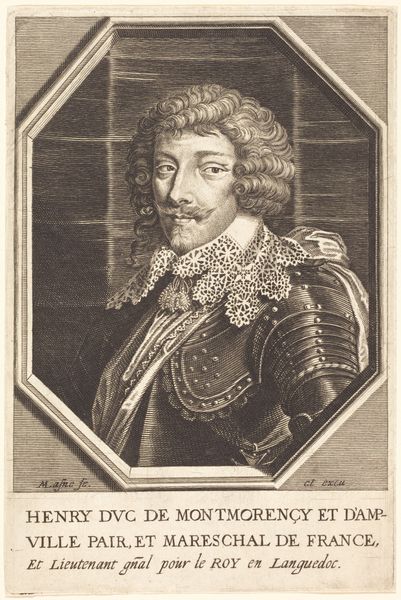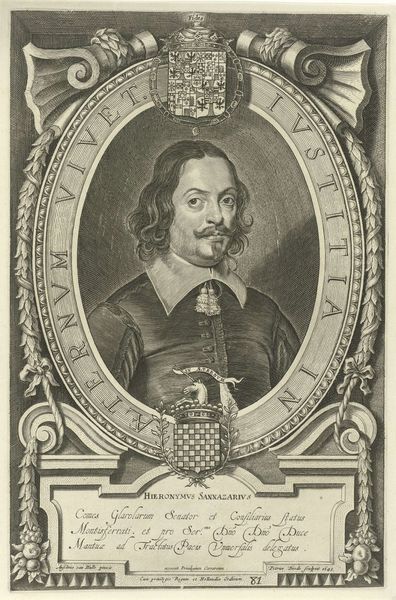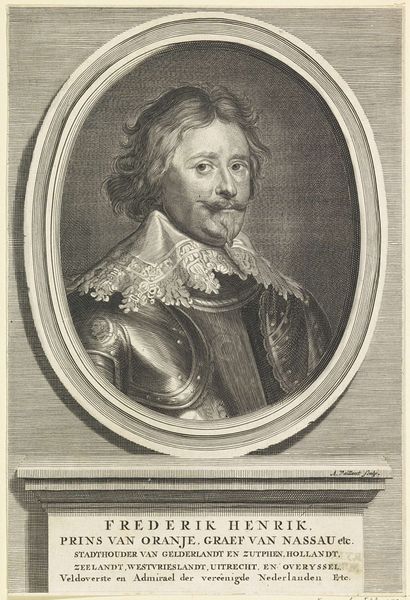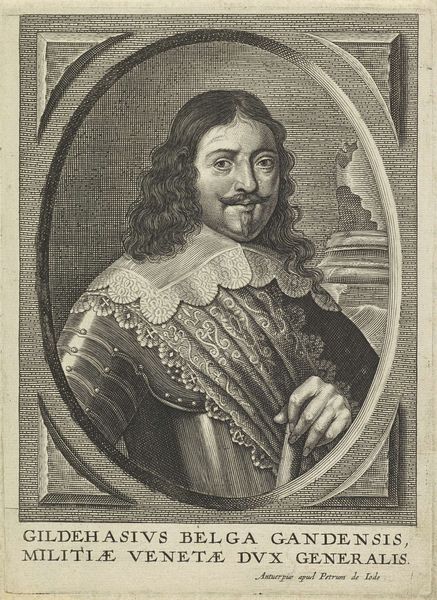
engraving
#
portrait
#
baroque
#
engraving
Dimensions: height 420 mm, width 298 mm
Copyright: Rijks Museum: Open Domain
Willem Hondius created this engraving of Johan Ernst II, Duke of Saxony, in the Hague, around 1628. As a print, this image could circulate widely, performing a public role for the Duke by communicating his status. Note the visual codes of wealth and power, such as his elaborate lace collar, his decorative sash, and his ornate armour. Consider how these features would signify prestige and authority to viewers in the 17th century, who were accustomed to reading such visual cues. The Latin inscription, typical of formal portraiture, further reinforces his noble identity. The phrase "Stanter et sapiens" suggests steadfastness and wisdom, qualities desirable in a leader. To understand this portrait fully, we might research the history of the House of Wettin, of which Johan Ernst II was a member, and the political context of the Holy Roman Empire. Such investigation reveals how art, like this portrait, is embedded in social and institutional histories.
Comments
No comments
Be the first to comment and join the conversation on the ultimate creative platform.
